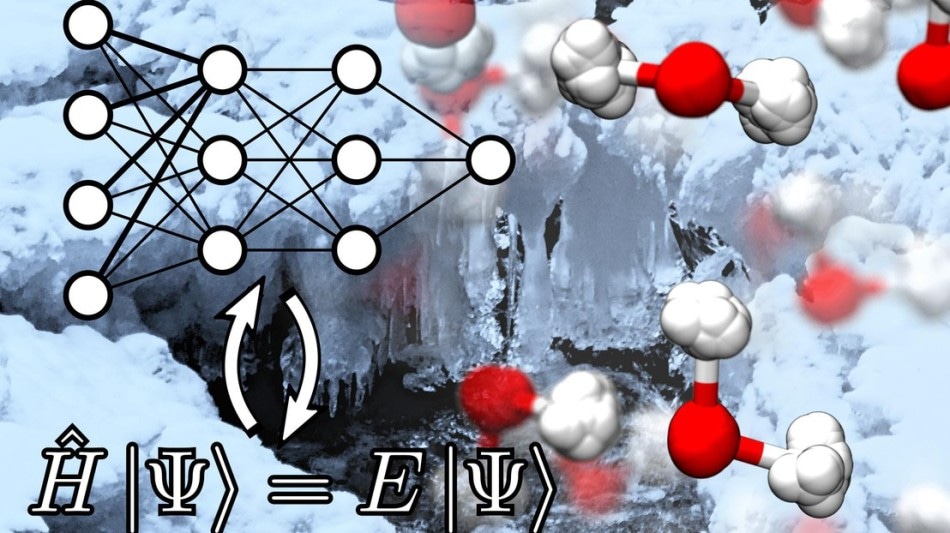Jan 7 2019
Why does ice float? Why is water densest at approximately 4 ºC? Why is the melting point of heavy water different from normal water? Why do snowflakes possess a six-fold symmetry?
 (Image credit: EPFL)
(Image credit: EPFL)
A joint research, headed by EPFL researchers and recently reported in the Proceedings of the National Academy of Sciences, offers physical insights into these queries by marrying quantum mechanics and data-driven machine learning methods.
Nuclei and electrons are the building blocks of most observable matters. Subsequent to the laws of quantum mechanics, their behavior can be elucidated in terms of their wave function, kind of a diffuse cloud associated with the possibility of viewing them in a specified time and point. While predictions and models of any material, including water, could be made by solving the Schrodinger equation, there is a certain difficulty. With the increase in the number of nuclei and electrons, the complication involved soon turns out to be intractable even with the speediest supercomputers, and even following a century of celebrated advancement in improving such calculations. In effect, calculations of quantum mechanics are still costly for a time period longer than a nanosecond, which is 1/1,000,000,000th of a second, or for systems with over a few hundred atoms.
In order to resolve these stringent restrictions, the scientists made use of an artificial neural network, or ANN, to figure out the atomic interactions from quantum mechanics. The ANNs’ design can be represented as many layers of interconnected nodes, which imitate the structure of the neurons present in a human brain. After learning the quantum mechanical interactions between atoms, the ANN makes rapid predictions about the forces and energy for a system of atoms, circumventing the need to carry out costly quantum mechanical calculations.
To date, it all sounds more like a classic success story of machine learning, but there are subtleties. When compared to the actual quantum mechanical calculations, the ANN has a residual error: it introduces an insignificant noise most of the times, and in case an input is extremely different from anything it has learned, it makes a wild guess at times. So, how to prevent the drawbacks of the ANN? Rather than using ANN on its own to make predictions regarding a system of atoms, the investigators applied it as a surrogate model. Essentially, several computation steps are usually involved when computing the properties of materials at a fixed temperature; hence, it is possible to delegate repetitive and laborious parts to the low-cost surrogate model. Lastly, the variation between the surrogate and the ground truth, which represents the variation between the quantum mechanics and ANN, can be considered and subtracted from the final predictions.
Through these methods, the team was able to recreate a number of thermodynamic properties of water from quantum mechanics, such as the variation in melting temperature for heavy and normal water, the density of water and ice, and the stability of varying forms of ice. The study also provides a number of physical insights on what give water and ice systems their strange properties.
One among the most prominent discoveries is that nuclear quantum fluctuations, which refer to the tendency of light elements like hydrogen to act more like a diffuse cloud instead of a localized particle, encourage hexagonal packing of molecules within the ice, which eventually results in the six-fold symmetry of snowflakes.